Fostering the Ability to Question in Future Generations Project Learn with Fun: Design-Thinking Classes for School Children
Published June 6, 2023

Published June 6, 2023
Fujitsu has been contributing in the field of education through means such as conducting environmental education classes using ICT for elementary and middle schools across Japan. Each member of the Design Center has also been involved in children's education in various ways, including providing learning materials on universal design for elementary school students and using advanced technology to design remote education systems for classes held in hospitals.
The Project Learn with Fun began as a designer's independent research. It was started with the desire to cultivate children's life skills and ability to create the society of the future through the power of design. The program uses design thinking and values finding issues and formulating questions rather than solving problems. Today, we spoke with two designers involved in the project.
Interviewee profiles:
Designers, Business Design Division, Design Center
Department names and titles are as of the time of the interview.
The Design Center has many employees engaged in independent research outside their regular work, such as participating in the Sake Project (in Japanese text only). The Project Learn with Fun also started in 2021 as an independent research project. Designers interested in education launched the project under the idea to determine whether design thinking could be utilized in classes to cultivate children's life skills and ability to create the society of the future.
Mr. Suginome reflects on the two years as such, "Initially, we considered developing teaching materials like karuta (Japanese playing cards) to help children easily understand social issues."
Mr. Maruyama adds, "In our research, we found that children feel anxious about the future. Only learning about problems can often lead to negative thinking. So, we decided to shift our focus to a program that uses design thinking to enable children to find and formulate their own questions, a program that encourages them to be positive and have dreams. We named it Project Learn with Fun,"
Mr. Suginome outlines three reasons for the approach. "First, as designers, we observe and formulate questions as part of our work so we can apply our skills and values to children. Second, we considered the commercial development of the project. In other words, the process and methods developed in Project Learn with Fun, aimed at helping children formulate better questions in an easy-to-understand manner, could also be applicable in adult workshops in our regular service design work."
There was also a need for such programs at schools. Currently, the Ministry of Education, Culture, Sports, Science and Technology (MEXT) is promoting "the Period for Integrated Studies*." This learning approach, where students formulate their own questions and think of answers, was introduced in the Curriculum Guidelines for high schools starting in the 2022 academic year. It is also gaining attention in elementary and middle schools, with many teachers interested in implementation. However, teachers often lack experience with this type of class and are searching for ways to incorporate it into their teaching while they are busy with their daily work. "Originally, we started the project from a designer's perspective to do something for children, but as we talked to teachers, we realized that our project matched the needs of the educational field," says Mr. Maruyama.
The program development involved collaboration with the Shingo Shiota Research Lab at the Faculty of Education, Shizuoka University, and the General Incorporated Association "Professionals for All Schools (Pro Gaku)." Mr. Suginome explains that when they started working together, there were differences in how each team perceived "questions," and they needed to align their understanding. "Those from Pro Gaku and the Faculty of Education viewed a question as a research question that digs deeper into an issue to find a research perspective. This way of thinking is akin to choosing a topic for a paper. In contrast, the questions designers want to address in Project Learn with Fun refer to creative questions such as 'how might we' (e.g., how might we achieve XX)." People with different specialties have very different definitions of the same word. This goes without saying, but this opportunity highlighted the value of working outside the usual corporate framework. Through aligning definitions and values, a prototype for the class program was developed, and in 2022, two pilot classes were conducted for fifth graders in Shizuoka Prefecture elementary schools.
As the basis of design thinking is human-centric, the library, which students and their friends use, was chosen as the observation target for the pilot classes. However, children might be confused by being simply told to "observe." Mr. Suginome explains, "We illustrated the points for user-centered observation with a worksheet titled 'Observation Glasses.' The worksheet helps children switch perspectives as if they were changing glasses. For example, in the 'Fun Glasses' section of the worksheet, students observe and note when they find the library enjoyable. The worksheet also includes negative aspects, such as 'Anxiety Glasses,' to make it easier for children to notice and empathize with gain points (joy, fun, and happy situations) and pain points (pain, worries, and unhappy situations) from the user's perspective." These Observation Glasses functioned as a guide for formulating questions tailored to the school education context.
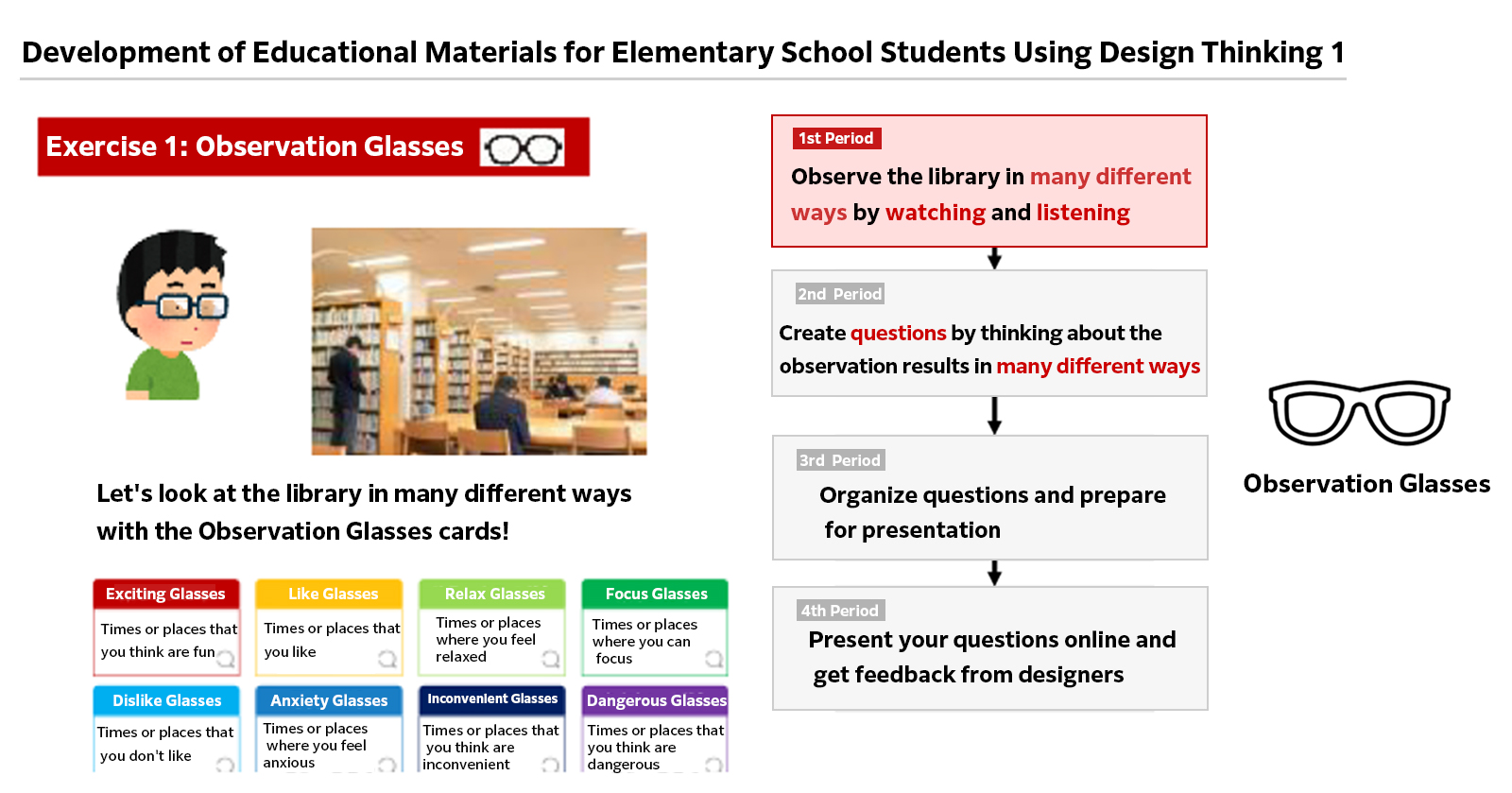 Development of Educational Materials for Elementary School Students Using Design Thinking 1
Development of Educational Materials for Elementary School Students Using Design Thinking 1After observing with the Observation Glasses and presenting in groups, it's time for the question-creating phase. Here, hints for formulating questions are provided, called Question Hats. For example, the children are encouraged to think from perspectives like, "What exactly is XX?" or "What do people who struggle to sit still think?" Finally, the groups gather their solution ideas and present them. The program consists of five periods (one period is 45 minutes).
Pro Gaku and homeroom teachers conducted the pilot classes. During the presentations in the fifth period, designers from the Design Center participated both on-site and remotely to give feedback. Mr. Maruyama notes, "While of course, evaluating the content of the questions, I was also conscious of praising the children's communication with each other and their thought processes, especially since opportunities for group work have been reduced due to the COVID-19 pandemic." Mr. Suginome recalls, "I gave feedback from a perspective that empowers the children and makes them feel that designing is fun. For example, one child noticed that the library's bulletin board changes with the seasons and realized that 'the library has a sense of seasons,' which I thought was a very good observation."
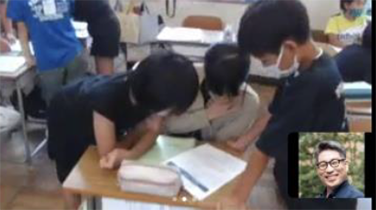 Pilot class held at Shizuoka Prefecture elementary school
Pilot class held at Shizuoka Prefecture elementary school
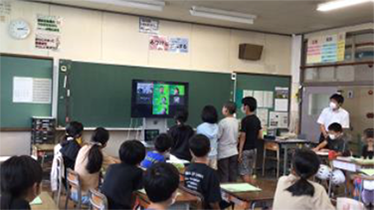 Photographs taken on-site
Photographs taken on-siteThe final class lasted 60 minutes, and the children participated enthusiastically throughout. The homeroom teacher commented, "It's incredible that fifth graders stayed focused for a 60-minute lesson. Even concentrating for a 45-minute class can often be challenging." Typically, school lessons are centered around problem-solving, and children likely have few opportunities to formulate questions in school. However, they seemed to approach the class actively and with enjoyment.
The program received positive feedback from school principals who visited the class. After the program, the homeroom teacher reflected, "I've started to value the questions raised by the children more and think about how to conduct lessons so that the children can take the initiative. Maybe I also changed."
Mr. Suginome was pleased with these comments, stating, "I was very happy to hear those remarks. The program brought out the children's ability to formulate questions and changed the mindset of those supporting the children. In other words, we were able to design the consciousness of the school teachers. I believe this shift in awareness will lead to behavioral changes in various educational contexts, positively impacting the children."
If Project Learn with Fun can develop a program where children successfully formulate questions, it could be applied to adults. The know-how gained through this project could be used in business co-creation projects and service design. The pilot classes provided various insights.
For example, Mr. Maruyama noted, "I noticed that in workshops for adults, we often use abstract language. That doesn't work with elementary school students. This made me think that I also may not have communicated accurately with adults. From now on, I will use concrete language that anyone can understand."
Also, Observation Glasses and Question Hats, which provide specific perspectives, are not often used with adults as they limit their scope of vision or thinking. Mr. Maruyama comments on his new insights, "However, with Pro Gaku's support, we were able to incorporate specific perspectives that are different from ours such as, 'Challenge Hat: What do people who struggle to stay quiet think?' This process could be applied to adults in terms of user understanding and deepening empathy, both of which are important factors in the process of design thinking.
In the following academic year, the team plans to conduct pilot classes in schools in mountainous areas and continue to refine the program.
Mr. Suginome comments, "These are likely to be areas that have more issues than urban areas. It would be wonderful if Project Learn with Fun inspires children to continuously learn about and question their communities from the early stage of elementary school and then solve local problems when they enter the workforce." In closing, the interviewees shared their thoughts about future developments.
Mr. Maruyama: I coach a youth soccer team in my free time. I sometimes utilize my experience as a designer to hold workshops for players, coaches, and parents. I made use of this experience in the Project Learn with Fun. In the future, I'd like to apply the insights gained from Project Learn with Fun in my private activities and workshops for adults in my professional life. Also, I would like to expand the project to elementary schools in Kawasaki, where Fujitsu was founded.
Mr. Suginome: By utilizing design expertise in educational settings, I hope to help contribute to enhancing children's life skills. At the same time, it would be great if the areas where Fujitsu designers can demonstrate their value, expand outside of business, like in Project Learn with Fun. Regarding Project Learn with Fun, we're considering evolving it into a program that involves not only designers but also a diverse range of people and one that enables participants to deepen their engagement with society.
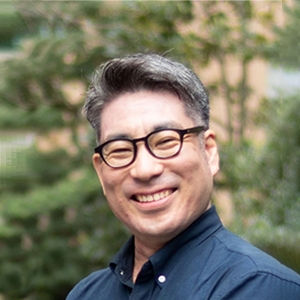 Mr. Suginome
Mr. Suginome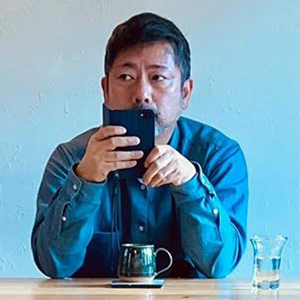 Mr. Maruyama
Mr. Maruyama